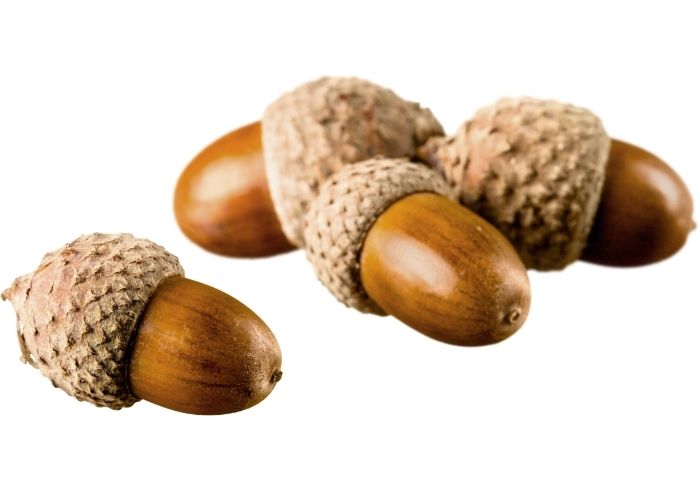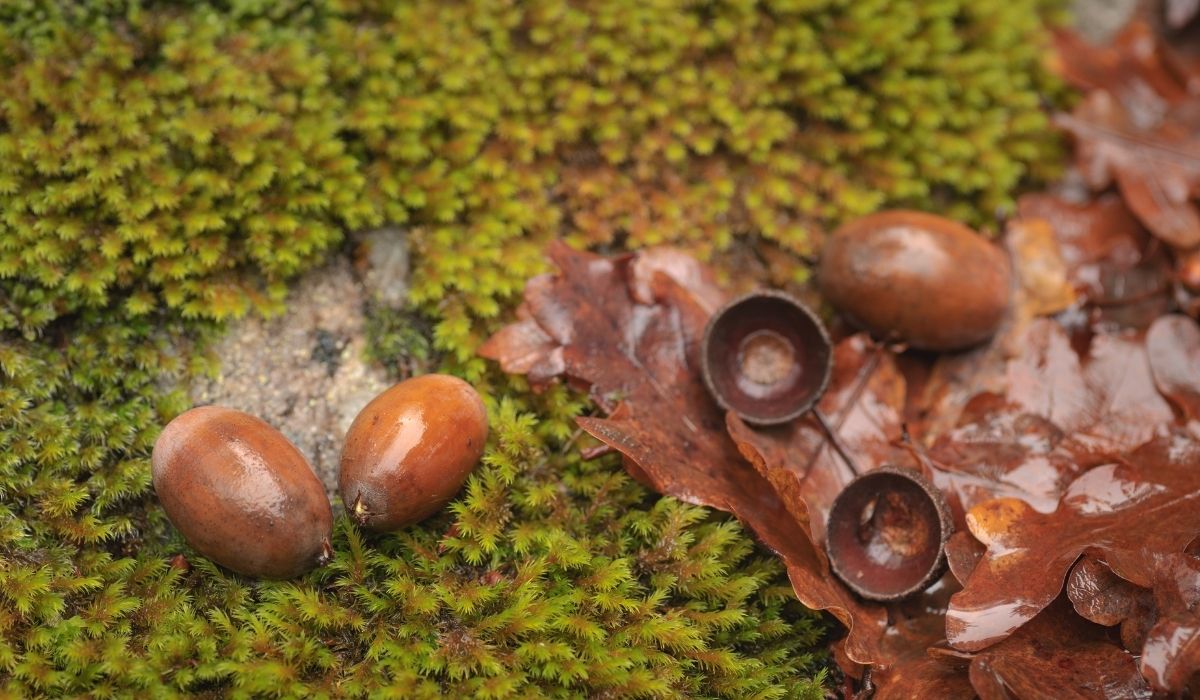Last Updated on March 25, 2022 by Fabiola L.
It is essential to learn how to leach acorns because they are naturally bitter and have to be processed to make them more palatable.
The unpleasant flavor comes from the tannins, which are dangerous to human health. Tannins could be harmful to our health by damaging our kidneys. According to Pubmed, ‘Tannins are naturally found in various edible and inedible plants, including tree bark, leaves, spices, nuts, seeds, fruits, and legumes. Plants produce them as a natural defense against pests. Tannins also contribute color and flavor to plant foods.’
Leaching is a process used to remove tannins by draining away the acids from the acorns using water. After you drain out all the acids, the acorns are entirely safe and tasty to eat as nuts.
Can You Eat Acorns?
Most people are discouraged from eating acorns by the daunting task of processing acorns. But, they have a rich earthy flavor enjoyed by people from Europe, Asia, North America, North Africa, and Mid East.
Acorns is a grain enjoyed by so many people because of their availability, healthy nutrition, and sustainability. To make them even more favorable they require little-to-no cultivation. You harvest them from the mighty oak tree.
A mature, healthy oak forest can produce as much as 6,000 pounds of acorns per acre. Therefore, you have no reason not to try them out if you live near an oak forest. Acorns are a good source of vitamin A and C, with a fat percentage of 17% and up to 4% protein.

Harvest And Leach Acorns
Acorns must be processed to make them edible. The tannins in acorns should be leached out to make them suitable for human consumption. Tannins are known to interfere with digestion by binding proteins into the gastrointestinal tract. Anything that contains tannin should be consumed moderately and with caution.
Some plants contain more tannins than others; therefore, every plant should be treated separately when dealing with tannin levels.
The two types of oak species are the red oak group and the white one.
The red oak group has species such as the black oak, the Scarlet oak, the red oak, containing high tannin acorns.
The white oak contains species with more palatable acorns. The chestnut oak falls in the white oak species, and its acorns are preferred due to their large size and easy shelling.
How To Leach Acorns
Considerations before you start leaching acorns.
You can use several ways to reach the tannins, but these ways can be summarised into 2 – cold leaching and hot leaching. The method you want to use is determined by what you want to do with your acorns afterward.
The temperature you use while processing the acorns is critical. Roasting or boiling acorns precooks the starch; therefore, they cannot be used as a binder in any recipe. They are best used in burger patties, snacks, mock coffee, or added in stews. Cold leached acorns thicken when cooked, the same way eggs do. They are best suited for baking flour.
Ensure that you remove the shells before leaching. Using a pair of gloves and a very sharp knife, cut the husks and remove the acorn meal. If you intend to use them for coffee or flour, chop them in quarters for easier leaching and use. They are easy to cut and faster to dry than whole acorns.
Coldwater Leaching
Squirrels know how to leach acorns in cold water by burying them in the ground and leaving them there for an extended period. When the rain comes, the running water makes leaching work natural and easy for them.
So to leach your acorns in cold water, follow the following steps
- Crush the acorns into small pieces or grind them into a coarse meal. This step quickens the process
- Remove as much brown skin as possible before grinding. The brown coat is quite bitter, and you don’t want it added to your meal.
- Soak your chopped acorn in many changes of water until the water runs clear or until acorns do not taste bitter anymore.
- Allow it to settle and then strain it. Repeat the process over and over again until you are sure the acorns are ready to eat.
- The leaching could take time between 1 day to 1 week. Do not allow your acorns to stagnate even for a single day, or this will spoil your mix.
Alternatively, place your chopped acorn in a cheesecloth or a Muslin over the basket in a sink. Massage them gently and keep the water constantly running until they don’t taste bitter anymore. This process works really quickly compared to the other method. However, some flour and oils are leaked out due to the movement.
Once you have cleaned your acorns, your acorn meal is ready for use as baking flour without needing any further preparation.
Read more about Cleaning Plant Leaves With Olive Oil – Is It A Terrible Idea?
Hot Water Leaching
This method leaves you with a sweeter flavor. Here are the steps to follow
- Place your shelled acorns in a pot with cold water and salt.
- Bring it to a boil allowing it to simmer for 30 minutes.
- You will notice that the acorn skins detach and float, making it easy to remove them using a skimmer.
- Get a second pot of boiling water ready to pour in the acorns for the second time.
- When you notice that the water has darkened, pour it. Put them in the second part of freshly boiling water.
Using boiling water ensures you do not put them in cold water at any point as this will bind the tannins, making them bitter. Keep changing the boiling water for the 3rd and 4th time until the water runs clear, and all the bitterness is gone.
You can use leached acorns right away in any recipe you desire. You can also dehydrate them, pickle them in salt and brine, or frozen for later use.
Final Thoughts
Well, how to leach acorns is quite a lot of work. However, the new flavors and new skills you will learn in using nature’s resources are worth it all. Acorns are high in nutrition, making them an excellent addition to your meals.
Next, find out more about How To Grow An Orange Tree From A Seed.
Caroline is a gardener who loves to get down to the nitty–gritty of gardening. She proudly proclaims herself as a ‘dirt worshipper‘ and can often be found deep in the garden, covered in soil and singing to her plants. As a self–proclaimed ‘plant whisperer‘, Caroline believes that plants need love and attention just like any other living thing, and she loves to give them both. When she‘s not tending to her garden, you can often find her researching the latest gardening trends, or teaching others how to make their gardens thrive



